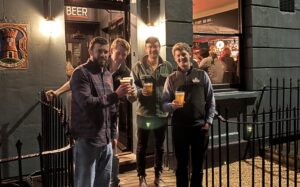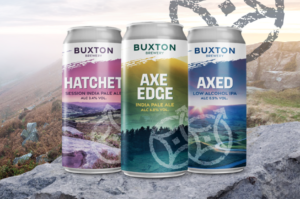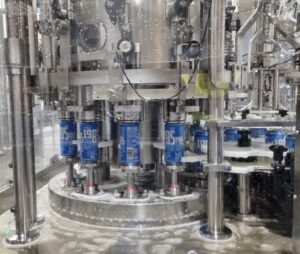As craft transitions from high growth to saturation, the key to success is to double down on what makes your brand, and craft, special, argues Luca Lorenzoni, who has spent the last six years as CEO of two of the UK’s fastest growing craft breweries: Camden Town Brewery, and most recently Northern Monk.
If you read the news, I wouldn’t fault you for concluding that Craft Beer is in trouble. CO2 shortages, ‘oversaturated’ market, unprecedented cost increases, brewery closures…it’s relentless. And on the surface, none of those things are wrong.
But context is missing. Let me frame it up another way:
Over the last 15 years in the UK, craft beer production has grown from almost non-existent to over £1.4bn in Revenue in 2022(1). Some bold visionaries developed beers, brands and experiences that clearly nailed an unmet desire of beer drinkers.
Focusing on innovation, authenticity and being more connected to drinkers than ever before, craft breweries opened around the country as demand boomed; and almost no breweries failed. Instead of competition, those in the industry made friendships with other breweries and travelled the world for collaborations, conferences, and festivals. All were for ‘work’, but each was also a social event or celebration.
The world was infatuated with craft beer. Everywhere Founders, Brewers and employees went, people wanted to hear their story, whether it was at a festival, or meeting up with old friends. Breweries became beacons of their community. Investors took note. Capital was available to expand and meet the insatiable demand of drinkers, and for those that chose to do so, global brewers were looking to snatch up brands to get into the category they couldn’t crack on their own.
Not as gripping a headline as ‘UK Craft Brewery Failures Escalate in Oversaturated Market’, is it? But it’s also all true. When you look at it that way, of course the market was going to saturate…who doesn’t want in on that?
Yes, things are tougher in 2023 than they were in 2019. But the narrative shouldn’t be about how it’s harder than it was. Saturated doesn’t need to have a negative connotation…most markets are saturated. The narrative needs to shift to: what are you going to do about it?
As craft transitions from high growth to saturation, I believe the key to success is to double down on what makes your brand, and craft, special, but be open to ways to become more disciplined and mature. Or put another way: Take the best of craft and take the best of macro.
I worked almost 10 years for AB InBev, the largest and most profitable brewery in the world. I worked on brands and projects in over 25 countries globally, and almost all of them were saturated. I was indoctrinated in the power of efficiency and cost discipline as tools of success in saturated markets, but I also witnessed how to take it too far. For the last 6 years I have run craft breweries in the UK where growth rates were as high as triple digits, but never less than 20%.
Our success was down to incredibly passionate people who tirelessly focused on understanding and connecting with the consumer, and embracing the chaos that is prevalent in less mature, high growth businesses. Starting from the largest brewery in the world and ending at what was a 12khL brewery in Leeds has given me a perspective on how to succeed, and fail, in both highly saturated and very high growth categories.
As craft transitions from high growth to saturation, I believe the key to success is to double down on what makes your brand, and craft, special, but be open to ways to become more disciplined and mature. Or put another way: Take the best of craft and take the best of macro.
That is exactly the goal of this project. I wanted to use my experiences, combined with some research to initiate conversations that will help craft evolve and mature in this way. It is ultimately what I would have wanted when running a craft brewery in 2023.
To make the conversation as practical as possible, I’ve used data on the UK market, but if you are from a brewery outside the UK, or someone that has a keen interest in craft breweries, and specifically the economics of it, there are lots of interesting insights to take away.
Lastly, this is not intended as an instruction manual full of infallible opinions and solutions. Some parts you will agree with, some parts you may disagree with, some parts may not be relevant for your challenges or goals. The goal is to start what I believe to be a crucial conversation, one that will hopefully continue with industry friends over beers, in your offices or breweries, and in the comments section of this post.
Part 1: The Current State of Craft Beer
Everyone in craft beer will be familiar with the phrase that the UK is 5 years behind the US. It’s surprising how accurate that statement has been over time. We’re lucky because for us in the UK, looking at the US was like looking into the future of our market. It inspired many of our breweries, beers, and brands, and as we approach a time where craft beer in the UK needs to evolve, there is no reason we shouldn’t look to our friends in the US again.
Well just over 5 years ago, the US craft beer market became saturated. In fact, since 2017, the US craft beer industry has seen an average annual growth rate of just 1.2%(2). At the same time, the UK market was flying; from 2019 to 2022 craft grew over 52% in the Off Trade(3).
But here we are, 5 years after the US hit saturation. While new brewery openings in the US began to slow in line with growth, the UK accelerated rapidly, and in 2018 the UK rate of brewery openings first surpassed that of the US. Over the last 5 years, the number of breweries in the UK grew by 38.4%(4), while over that same period, the number of breweries in the US grew 13.5%(5).
Being 5 years behind, we played catch up…and took it even further. The UK now has 1 brewery for every 22k people over 18. In the US this number is 1 brewery for every 27.2k people over 18, and the US has a higher beer consumption per capita than the UK.
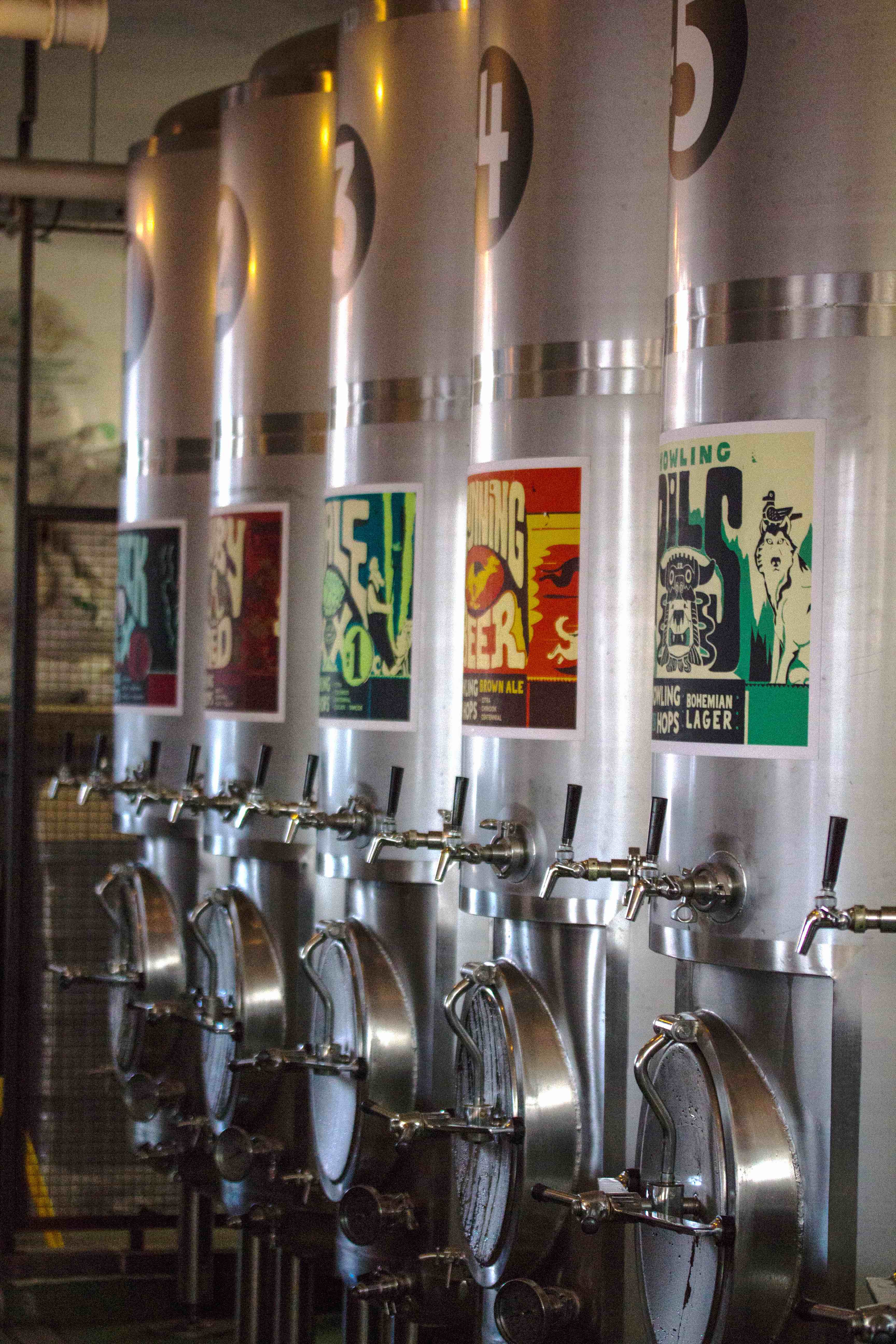
Now, admittedly, the effects of that saturation haven’t yet hit us to the same level as they have in the US, but they are catching up quickly. The best example of this is closure rates for breweries where in the US the rate is about 3%(6), while in the UK the most recent data show a rate of 1.9% entering insolvency over the last 12 months to April 2023 (up from 0.7% the year prior)(7). But a closer look at one specific economic factor will show why that is where we are heading and potentially exceeding if we don’t adapt quickly: Wealth.
Craft is a premium category. More specifically, the average Off Trade price per litre for craft beer is 76% higher than mainstream beer(8), and that is for craft beer in grocery and convenience (not including bottleshops). Outside of these retailers, you’d be challenged to find a 440ml can of craft beer for under £5, which is almost 400% higher than mainstream beer and 270% higher than World/Discovery. To put it simply, it takes wealth, and disposable income, to be a craft beer drinker.
Being 5 years behind, we played catch up…and took it even further. The UK now has 1 brewery for every 22k people over 18. In the US this number is 1 brewery for every 27.2k people over 18, and the US has a higher beer consumption per capita than the UK.
The US has a median income of $54,000 (approx. £42.2k at current exchange), while the UK median income is £33,000(4). That means the UK’s median income is 22% lower than the US. While this stat doesn’t consider cost of living factors, I think we can conclude the median consumer in the US has significantly more disposable income to spend on a premium category like craft beer if they choose to do so. And as we’re all aware, this isn’t getting better in the UK. Average living standards have been broadly stagnant in the UK since 2007, with more recent, sticky inflation meaning that since late 2021, real wages (wage growth adjusted for inflation) are in decline.
To compound that gap in wealth, craft beer in the UK is more expensive than in the US. At the most premium end of the market, when price is adjusted for current exchange rate, a 6.5% Hazy IPA from a leading UK Brewery comes in almost 30% more expensive than a similar beer from Other Half (a US Brewery that is considered by many as one of the leading Hazy Breweries in the world).
Even on the more entry-level end of craft, buying a beer from Brewdog’s webshop in the UK is over 10% more expensive per ml than the same beer in the US when price is adjusted for currency. A six pack of Sierra Nevada’s Hazy Little Thing (6.7% and 355ml cans) from Walgreens in the US is £7.82 when adjusted for currency. What a deal. Regardless of channel, craft beer in the UK costs a drinker more than it does in the US.
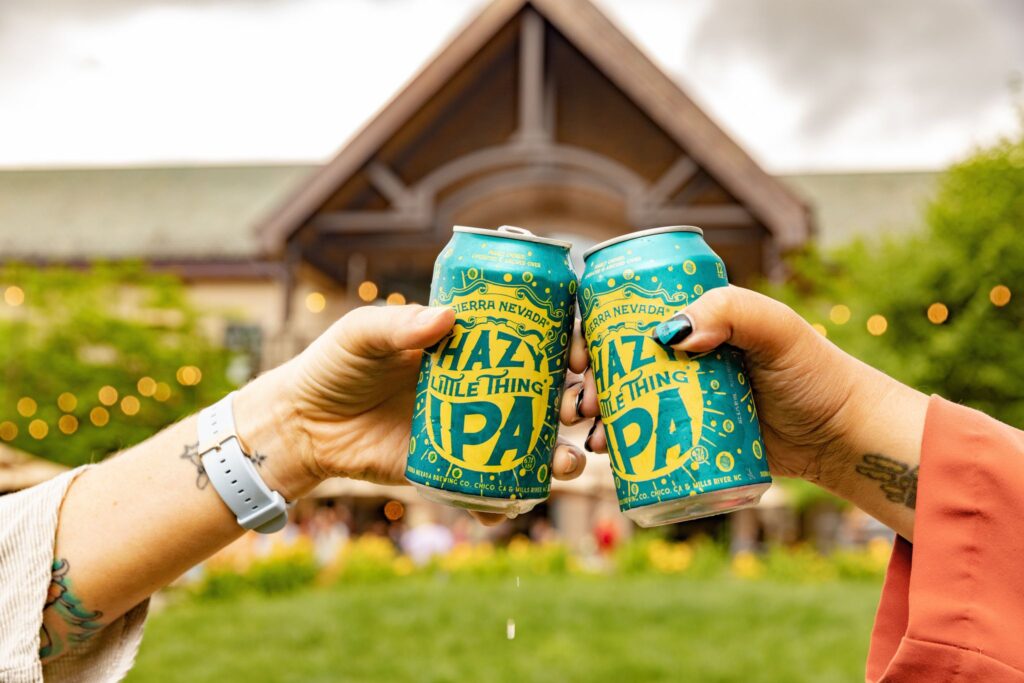
So I feel confident in concluding that if we don’t evolve, the UK craft beer market will show no / small category growth because craft beer fans that can afford craft beer already buy it, and most UK consumers cannot afford or do not yet care enough about craft beer to give it a try.
You’ll notice to this point I’ve barely mentioned most of the topics that dominate the news headlines and narrative: the significant increase in raw material and utility costs, the on trade performing strongly over the summer, rail strikes, etc. I don’t want to minimise the impact of these shocks, because I know first-hand the stress and urgency they are causing as you ensure your brewery can mitigate or accelerate from them…but they are mostly temporary shocks. It will rain more, rail strikes will end, and even inflation will eventually fall, and wages should catch up.
What isn’t temporary is the supply and demand figures I have focused on.
It’s important that we don’t hope for some of these more recent shocks to soften to solve our problems, because even if they do, the bigger challenge is the macroeconomic reality which is here to stay. We need to react and be agile to overcome the temporary shocks, but we need to evolve and mature to succeed for the long term.
How can we evolve?
A common analogy for discussing the size of a market is to liken it to a pie. Let’s run with that.
If you agree with my conclusion, if we do not evolve, the size of our pie may increase/decrease slightly with the temporary shocks, but overall, it will stay around the same size.
The first response to saturation is typically increased competition amongst those in the market for more of that existing pie, and for anyone on social media or brewery mailing lists, you no doubt see this happening. Brewery sponsored ads are clearly targeting craft beer audiences, and mailers are promoting discounts more than ever before. This makes sense for now, especially in a country where one brand still has a 54% share of Off Trade volume, and that share grew vs the previous year!(9). There is some of that existing pie to be had.
But if we only focus on scrapping for our piece of the existing pie, we’re going to see a few winners, but a lot more failures and an overall less healthy market. We need more pie, and there are two ways to do that:
- Profitability: Make the Pie Thicker
Currently, the Craft Beer pie in the UK is thin. Looking at the latest public management accounts of 5 of the largest independent craft brewers in the UK, only one brewery has an operating profit greater than 5% of turnover, and 2 of the 5 have an operating loss. The average operating profit % of those 5 brewers is 0.2%(10).
Craft Beer needs to become more profitable because we can’t sustain short term financial shocks, pay down debt, re-invest in our facilities to continue to deliver great experience to consumers, build retirement savings, or have much leverage in investment or exit discussions at a breakeven operating profit. If we don’t improve profitability, we’ll constantly be chasing debt, investment or exits because we won’t have given ourselves the flexibility to choose another, more sustainable path.
2. Innovation: Make the Pie Bigger
15 years ago, Craft Beer barely existed in the UK. The overall beer market was saturated and highly commoditised. In fact, Annual Beer volumes from 2000 to 2008 had declined almost 9%(4). Then something happened: Innovation.
While Craft Beer didn’t stem the decline in total beer volumes, it did create a much more valuable category, stole share from the incumbents, and delivered choice to the consumer. Innovation created the craft beer pie, so it can absolutely be the tool to grow it.
So we need a bigger, thicker pie. How can we make it happen? That’s what we’ll dive into in the final 2 parts of this project.
As I mentioned in the intro, this is not intended as an instruction manual full of infallible opinions and solutions. Some parts you will agree with, some parts you may disagree with, some parts may not be relevant for your challenges or goals. The goal is to start what I believe to be a crucial conversation, one that will hopefully continue with industry friends over beers, in your offices or breweries, and in the comments section of this post. So, what do you think?
Footnotes
- Ibisworld
- Bart Watson, BA Chief Economist, presentation at CBC 2023
- Neilsen Data: GB Craft Beer Total Coverage
- Statista
- www.brewersassociation.org/statistics-and-data/national-beer-stats/
- www.brewersassociation.org/press-releases/brewers-association-releases-annual-craft-brewing-industry-production-report-and-top-50-producing-craft-brewing-companies-for-2022/
- www.theguardian.com/business/2023/jun/05/rise-in-uk-breweries-going-bust-amid-thirst-for-cheaper-craft-beers
- Neilsen Data: GB Craft Beer Total Coverage – Latest 52 Weeks – WE 08 April 2023
- Neilsen Data: GB Craft Beer Total Coverage – Latest 52 Weeks Vs Year Ago – WE 27 May 2023
- Companies House
About the author
Luca has spent the last 6 years as CEO of two of the UK’s fastest growing craft breweries: Camden Town Brewery, and most recently Northern Monk. Prior to his time in the UK, Luca spent 10 years at AB InBev working in the Canadian, European and Global Businesses across Production and Commercial roles. Having started his career at the largest brewery in the world and ending at what was a 12khL brewery in Leeds has given Luca a perspective on how to succeed and fail in both large and small breweries, as well as both highly saturated and very high growth markets. Now, he’s taking the learnings from those experiences to help craft breweries evolve within the saturating market we now find ourselves in.


